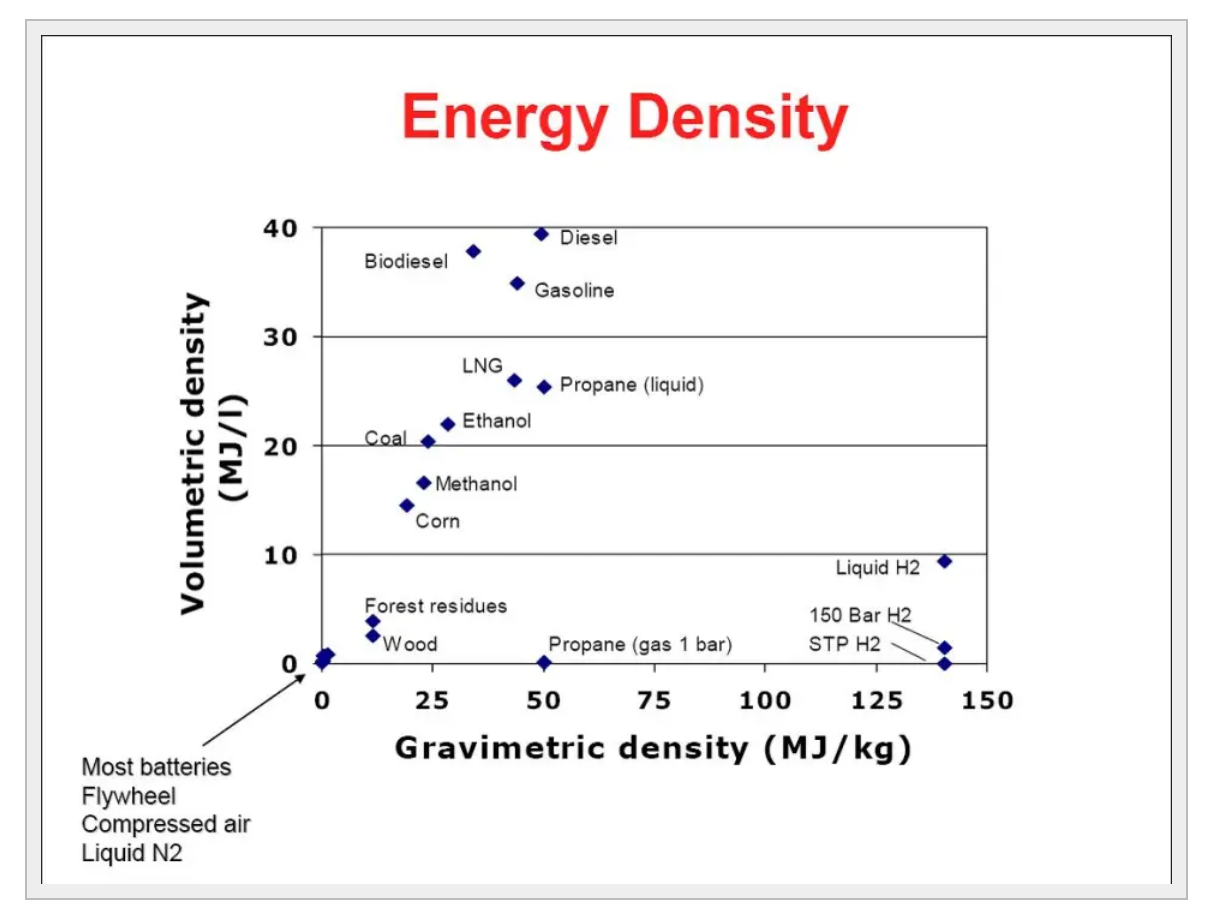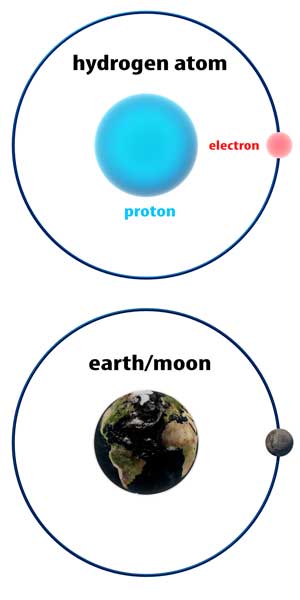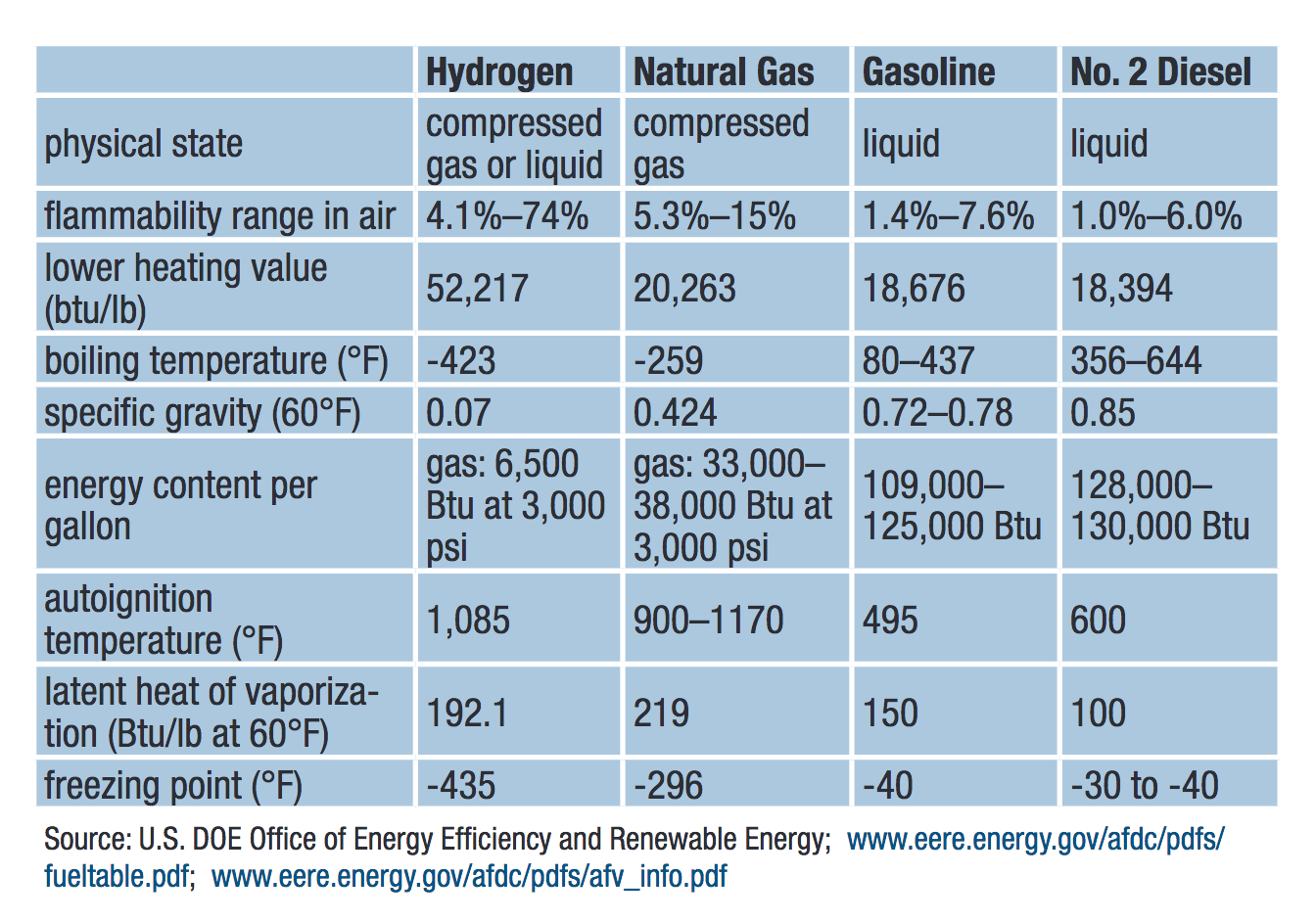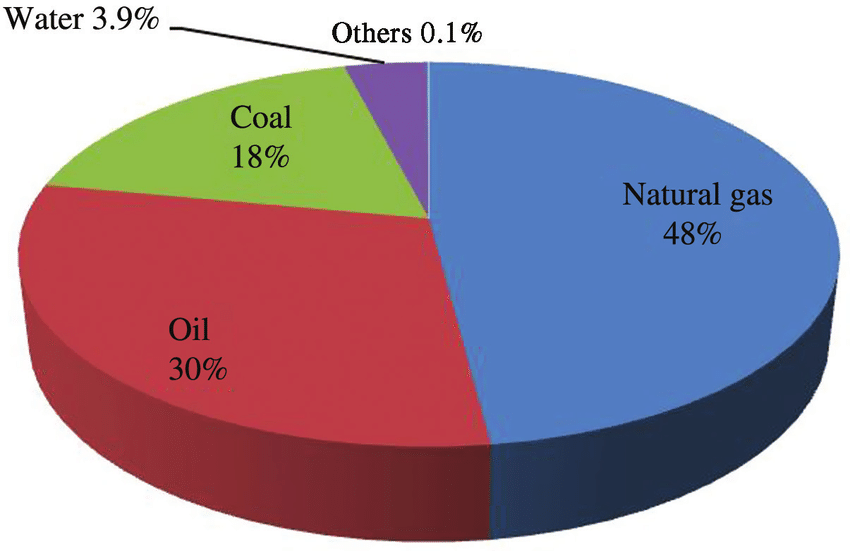 Hydrogen (H2), a colorless, odorless, tasteless, flammable gaseous substance that is the simplest member of the family of chemical elements. The hydrogen atom has a nucleus consisting of a proton bearing one unit of positive electrical charge; an electron, bearing one unit of negative electrical charge, is also associated with this nucleus. Under ordinary conditions, hydrogen gas is a loose aggregation of hydrogen molecules, each consisting of a pair of atoms, a diatomic molecule, H2. The earliest known important chemical property of hydrogen is that it burns with oxygen to form water, H2O; indeed, the name hydrogen is derived from Greek words meaning “maker of water.” (Britannica)
Hydrogen (H2), a colorless, odorless, tasteless, flammable gaseous substance that is the simplest member of the family of chemical elements. The hydrogen atom has a nucleus consisting of a proton bearing one unit of positive electrical charge; an electron, bearing one unit of negative electrical charge, is also associated with this nucleus. Under ordinary conditions, hydrogen gas is a loose aggregation of hydrogen molecules, each consisting of a pair of atoms, a diatomic molecule, H2. The earliest known important chemical property of hydrogen is that it burns with oxygen to form water, H2O; indeed, the name hydrogen is derived from Greek words meaning “maker of water.” (Britannica)
 With all our liquid water, the earth is well suited for hydrogen utilization. Even our unique planetary configuration mimics the hydrogen atom. The Chemical and Energy properties of hydrogen are vastly different than any other energy resource we have on this planet. Typically, when we think of energy or fuels - we automatically associate these terms with toxic chemicals, gases and liquids like associating nuclear power with the Fukushima disaster. Profoundly, the smallest atom we know is anything but toxic and contains more energy per gravimetric density (weight) than any other resource we have on earth - barring nuclear rods that power nuclear power plants.
With all our liquid water, the earth is well suited for hydrogen utilization. Even our unique planetary configuration mimics the hydrogen atom. The Chemical and Energy properties of hydrogen are vastly different than any other energy resource we have on this planet. Typically, when we think of energy or fuels - we automatically associate these terms with toxic chemicals, gases and liquids like associating nuclear power with the Fukushima disaster. Profoundly, the smallest atom we know is anything but toxic and contains more energy per gravimetric density (weight) than any other resource we have on earth - barring nuclear rods that power nuclear power plants.
 Hydrogen - being simplistic unto itself as an atom on the periodic table of elements - it is anything but simplistic as a molecule compared to other forms of fuels and energy. There are several different angles to view hydrogen: volumetric (mass), galvametric (weight), energy content of lower heating (LHV), higher heating values (HHV) and kilowatt hours (kWhs) AND in liquid forms of Gasoline Gallon Equivalent (GGE) as a comparative value to other fossil and non-fossil based fuel and energy resources. Lest we forget the ongoing debate of BEVs (Battery electric Vehicles) vs HFCVs (Hydrogen Fuel Cell Vehicles). We like to distinguish between other types of fuel cells that operate off different gases and use the acronym HFCV as opposed to the more common general FCEV of Fuel Cell Electric Vehicle. What becomes even more daunting is deciphering the comparative value of our little gaseous diatomic molecule of hydrogen (H2) with other liquid fuels that are based on gallons and liters as opposed to kilos or SCF (Standard Cubic Feet) of hydrogen.
Hydrogen - being simplistic unto itself as an atom on the periodic table of elements - it is anything but simplistic as a molecule compared to other forms of fuels and energy. There are several different angles to view hydrogen: volumetric (mass), galvametric (weight), energy content of lower heating (LHV), higher heating values (HHV) and kilowatt hours (kWhs) AND in liquid forms of Gasoline Gallon Equivalent (GGE) as a comparative value to other fossil and non-fossil based fuel and energy resources. Lest we forget the ongoing debate of BEVs (Battery electric Vehicles) vs HFCVs (Hydrogen Fuel Cell Vehicles). We like to distinguish between other types of fuel cells that operate off different gases and use the acronym HFCV as opposed to the more common general FCEV of Fuel Cell Electric Vehicle. What becomes even more daunting is deciphering the comparative value of our little gaseous diatomic molecule of hydrogen (H2) with other liquid fuels that are based on gallons and liters as opposed to kilos or SCF (Standard Cubic Feet) of hydrogen.
 The Specific Energy of hydrogen as a liquid (cryogenic) or gas (69 MPa, 25 °C) contains 141.86 (HHV) and 119.93 (LHV) megajoule (MJ) per kilo. But if we look at it as Energy Density it reverses, i.e. 10.044 (HHV) and 8.491 (LHV) megajoule (MJ) per liter where as Natural Gas has 53.6 MJ per Kilo and 0.0364 MJ per liter as a gas, hydrogen as a gas contains 5.323 (HHV) and 4.500 (LHV) MJ per liter. But - since Natural Gas is sold and transported by volume not weight - MMBTU (Million British Thermal Units) or Standard Cubic Foot (SCF) - hydrogen contains 325 Btu/ft3 (volume) and 61,084 Btus per lb. (mass) whereas natural gas contains 950 btu/ft3 (volume) and 19,500 btu per lb (mass). If we look at the electrical values of hydrogen at 33.3 kilowatt hours (kWhs) (LHV) and 39 kWhs (HHV) per kilo compared to natural gas – 0.13 kWh/cubic foot, Coal - 1.33 kWhs/pound and finally gasoline - 33.7 kWhs per gallon (GGE) and 37.95 kWhs per gallon of diesel (GDE).
The Specific Energy of hydrogen as a liquid (cryogenic) or gas (69 MPa, 25 °C) contains 141.86 (HHV) and 119.93 (LHV) megajoule (MJ) per kilo. But if we look at it as Energy Density it reverses, i.e. 10.044 (HHV) and 8.491 (LHV) megajoule (MJ) per liter where as Natural Gas has 53.6 MJ per Kilo and 0.0364 MJ per liter as a gas, hydrogen as a gas contains 5.323 (HHV) and 4.500 (LHV) MJ per liter. But - since Natural Gas is sold and transported by volume not weight - MMBTU (Million British Thermal Units) or Standard Cubic Foot (SCF) - hydrogen contains 325 Btu/ft3 (volume) and 61,084 Btus per lb. (mass) whereas natural gas contains 950 btu/ft3 (volume) and 19,500 btu per lb (mass). If we look at the electrical values of hydrogen at 33.3 kilowatt hours (kWhs) (LHV) and 39 kWhs (HHV) per kilo compared to natural gas – 0.13 kWh/cubic foot, Coal - 1.33 kWhs/pound and finally gasoline - 33.7 kWhs per gallon (GGE) and 37.95 kWhs per gallon of diesel (GDE).
And finally we must look at the power to weight ration of hydrogen compared to other electrical storage technologies. To put this into context - a Lithium-ion battery used in most BEV contains 50 to 260 Wh/kg (watt hours per kilo) whereas hydrogen contains a kilogram of hydrogen contains 33,200 watt-hours (Whs) per kilo. No, that’s not a mistake. Yes, hydrogen is more than 100 times as energy-dense as a lithium-ion battery!
Let's put this another way. The new model Tesla Model 3 has an EPA range ratings: 253 miles. That battery weighs 1,060 pounds (480 kg) in a 0.40 m³ volume; a density of 150 Wh/kg. If we magically stored 480 kilos of hydrogen in a Toyota Mirai - the leading hydrogen fuel cell automobile - according to the EPA, the Mirai goes 402 miles per tank - estimated 67 city/67 hwy/67 combined MPG for 2020 - the Mirai could travel 31,680 miles. When in fact the Toyota Mirai only carries a fuel payload of a pittance 5 kilos - NOT a behemoth 480 kgs like the Tesla battery.
The weight of the Mirai fuel cell stack is 44.6 kilos and the two hydrogen tanks onboard weigh in at 87.5 kilos. Since the rest of the Mirai is an EV like the Tesla - it also has a small battery to operate the peripheral electronics and weighs in at only 44 kilos. So if we added up all the power and controlling systems of the Toyota Mirai it would total 181 kgs - nowhere near the weight of the Tesla Model 3 480 kilo battery.
Hydrogen is essential for life. The universe. And everything in between.
Though hydrogen is the smallest atom in the universe, it's also the most abundant element. You can find hydrogen in the very large -- our sun – the largest hydrogen generator in our solar system is 109 times the diameter of earth allowing 1,300,000 planet earths to fit inside of it” is made up of 91% hydrogen. At the opposite end of the scale, you can find hydrogen in the very small -- in the glue that binds our DNA together, in every molecule of water, in every breath we breathe, and every cell inside our body -- life could not exist without hydrogen.
hydrogen in the very large -- our sun – the largest hydrogen generator in our solar system is 109 times the diameter of earth allowing 1,300,000 planet earths to fit inside of it” is made up of 91% hydrogen. At the opposite end of the scale, you can find hydrogen in the very small -- in the glue that binds our DNA together, in every molecule of water, in every breath we breathe, and every cell inside our body -- life could not exist without hydrogen.
This naturally occurring element also just happens to be the largest regenerative energy resource on this planet. Hydrogen offers a clean, reliable and sustainable solution to every energy demand we presently rely on. It is endlessly recyclable. Hydrogen is indestructible. It is nature's 100% pure, sustainable "battery," and a green-power energy solution whose time has come.
There can be no real-world renewable energy plan without hydrogen playing a key role. A colorless, odorless, non-toxic and highly combustible  fuel, Hydrogen is the number one choice for NASA when lifting heavy cargo into outer-space precisely because it is so powerful. Burning hydrogen produces ZERO harmful emissions. The only by-product created in burning hydrogen is pure water. You can't get any cleaner than hydrogen. Jeff Bezos’ recent rocket launch of the “New Shepard” used liquid hydrogen and oxygen as the fuel to blast into space. Now put that power in your tank. Pound for pound, it out performs gasoline by a factor of three. And hydrogen and our next-gen hydrogen-based liquid fuels (H-fuels) can power everything -- from heavy transport and marine/aviation applications to your car, your stove, or entire cities. There is no limit to what these technologies can do, including dramatically and quickly lower world-wide pollution and CO2, GHG emissions.
fuel, Hydrogen is the number one choice for NASA when lifting heavy cargo into outer-space precisely because it is so powerful. Burning hydrogen produces ZERO harmful emissions. The only by-product created in burning hydrogen is pure water. You can't get any cleaner than hydrogen. Jeff Bezos’ recent rocket launch of the “New Shepard” used liquid hydrogen and oxygen as the fuel to blast into space. Now put that power in your tank. Pound for pound, it out performs gasoline by a factor of three. And hydrogen and our next-gen hydrogen-based liquid fuels (H-fuels) can power everything -- from heavy transport and marine/aviation applications to your car, your stove, or entire cities. There is no limit to what these technologies can do, including dramatically and quickly lower world-wide pollution and CO2, GHG emissions.
Since hydrogen is everywhere, we can extract this powerful element from various compounds including water, biomass, fossil fuel resources, and just about anything with carbon. We extract hydrogen using different types of processes, depending on the feedstock. These processes include:
- Thermal Processes - typically involving steam reforming, many hydrocarbon fuels can be used to produce hydrogen at ZERO emissions. Element One Technologies (EOT) is on the forefront of utilizing these 100% emission capture technologies.
- Electrolytic processes - Hydrogen can be separated from water using an electrolyzer. EOT has developed a unique alkaline-based electrolysis design and functionality called the "Dynamic Hydrogen Reactor." Preliminary performance tests indicate an impressive ~30% higher efficiency than current alkaline-based electrolysis systems.
- Solar-driven processes - Using light as an agent, hydrogen can be extracted using natural photosynthetic processes found in bacteria and green algae, or more artificial applications like photo-electrochemical processes, or solar thermo-chemical reactions.
- Biological processes - Microbes and bacteria can produce hydrogen using nature's own biological reactions.
The technology to produce hydrogen is mature, widely available, and is as robust as it is scalable. From small residential and automotive uses, to Gigawatt power plants, we can immediately implement any number of strategies  to quickly move the world needle from where we are today, to a rapid-term de-carbonized future. All we need is the political will power and investments to accomplish such a most-worthy feat.
to quickly move the world needle from where we are today, to a rapid-term de-carbonized future. All we need is the political will power and investments to accomplish such a most-worthy feat.
While international and regional governments, policy makers, and stakeholders are rapidly organizing various strategies to curb greenhouse emissions and curtail pollution, consensus on an overall strategy is still on the far horizon. Developing nations like China, India and the US continue to produce billions of tons of climate affecting Green House Gases (GHG) each year. Emissions from power generation, industry, shipping, transport and manufacturing continue to pollute the atmosphere. And now with the increased heat and severe droughts increasing the intensity and duration of fire seasons, it seems little hope remains to forestall the impending doom predicted by scientist and climatologists alike.
Perhaps it's universal-irony that the key to some of the world's largest problems are to be found in the smallest atom.
The time for hydrogen is now
For many decades hydrogen has been known as "The fuel of the future -- and it always will be.” The mythical “hydrogen economy” has been spoken about since the early 70's. And even 145 years ago, acclaimed  science fiction writer, Jules Verne wrote, “Water will one day be employed as fuel, that hydrogen and oxygen which constitute it, used singly or together, will furnish an inexhaustible source of heat and light, of an intensity of which coal is not capable." Hydrogen has been a long time coming.
science fiction writer, Jules Verne wrote, “Water will one day be employed as fuel, that hydrogen and oxygen which constitute it, used singly or together, will furnish an inexhaustible source of heat and light, of an intensity of which coal is not capable." Hydrogen has been a long time coming.
At present Ninety-Six percent (96%) of hydrogen is produced from fossil fuel serving vast industrial applications from chemical production, fertilizer, utility scale turbine coolant to plastics. Four percent (4%) is produced from water via Electrolysis. With so few companies around the world producing hydrogen for a rapidly and ever growing market, there is unlimited opportunity for growth.
Element One Technologies - with 13 years in hydrogen development and applications -- adjoined by its vast network of industry collaborators, state and federal officials, industry alliances and coalitions from California to Washington DC -- is leading the way in Utah and throughout the western region of the US in developing real-world solutions for immediate hydrogen production as well as developing new technologies and alternative Hy-Fuels to rapidly de-carbonize the entire power-generation footprint and deliver real climate change solutions.
The problems we face are as large as the hydrogen atom is small. And Element One Technologies, with more than a decade-long ramp-up of innovation and research, has already tackled and overcome some of the largest issues associated with hydrogen development, storage, transportation, and technical applications for this and other HY-Fuel alternative power sources.
We are excited about the future as we tackle the largest problems facing our planet. We invite you to come along for a journey that only happens once in a civilization - embracing sustainable, clean and affordable energy.
